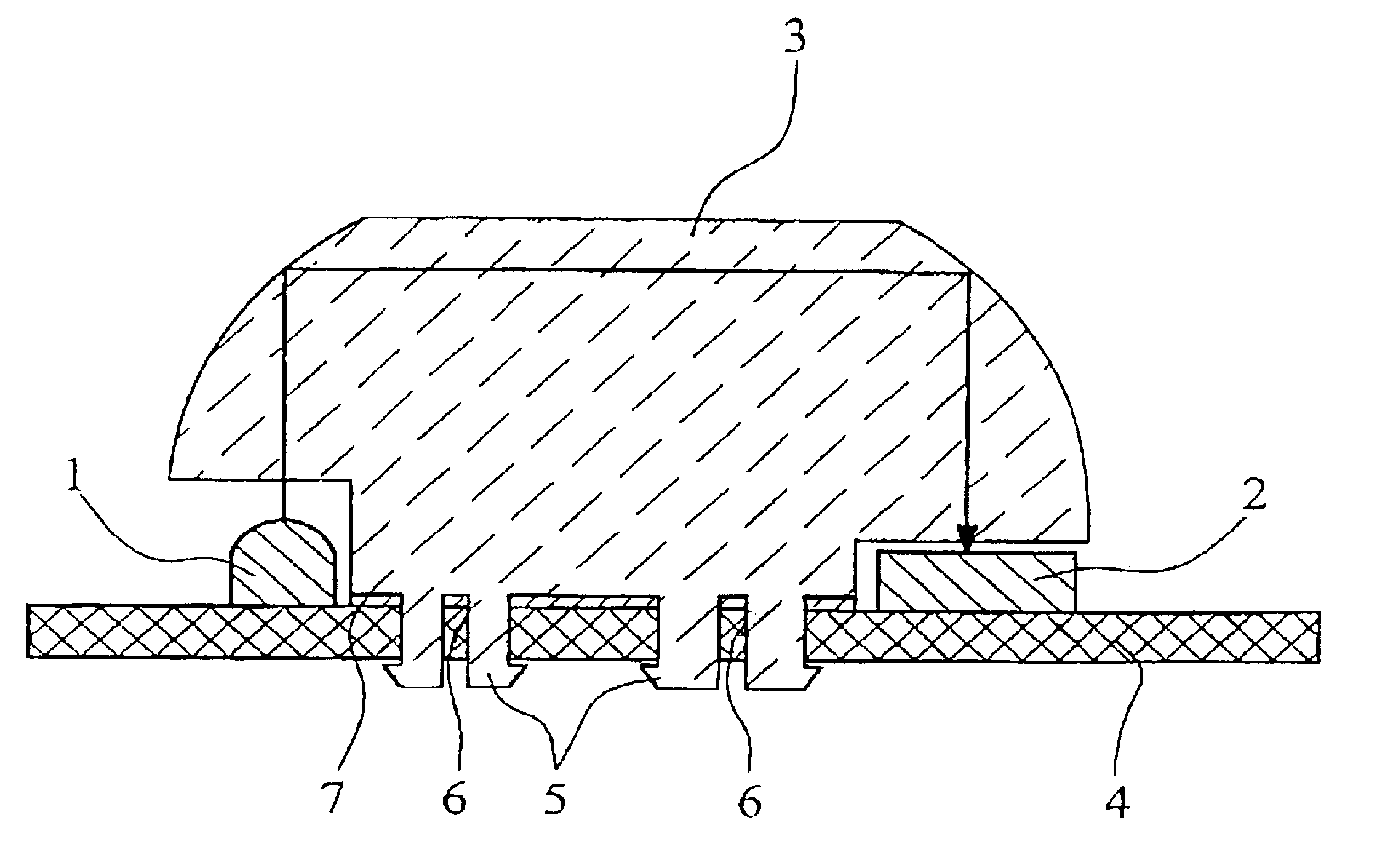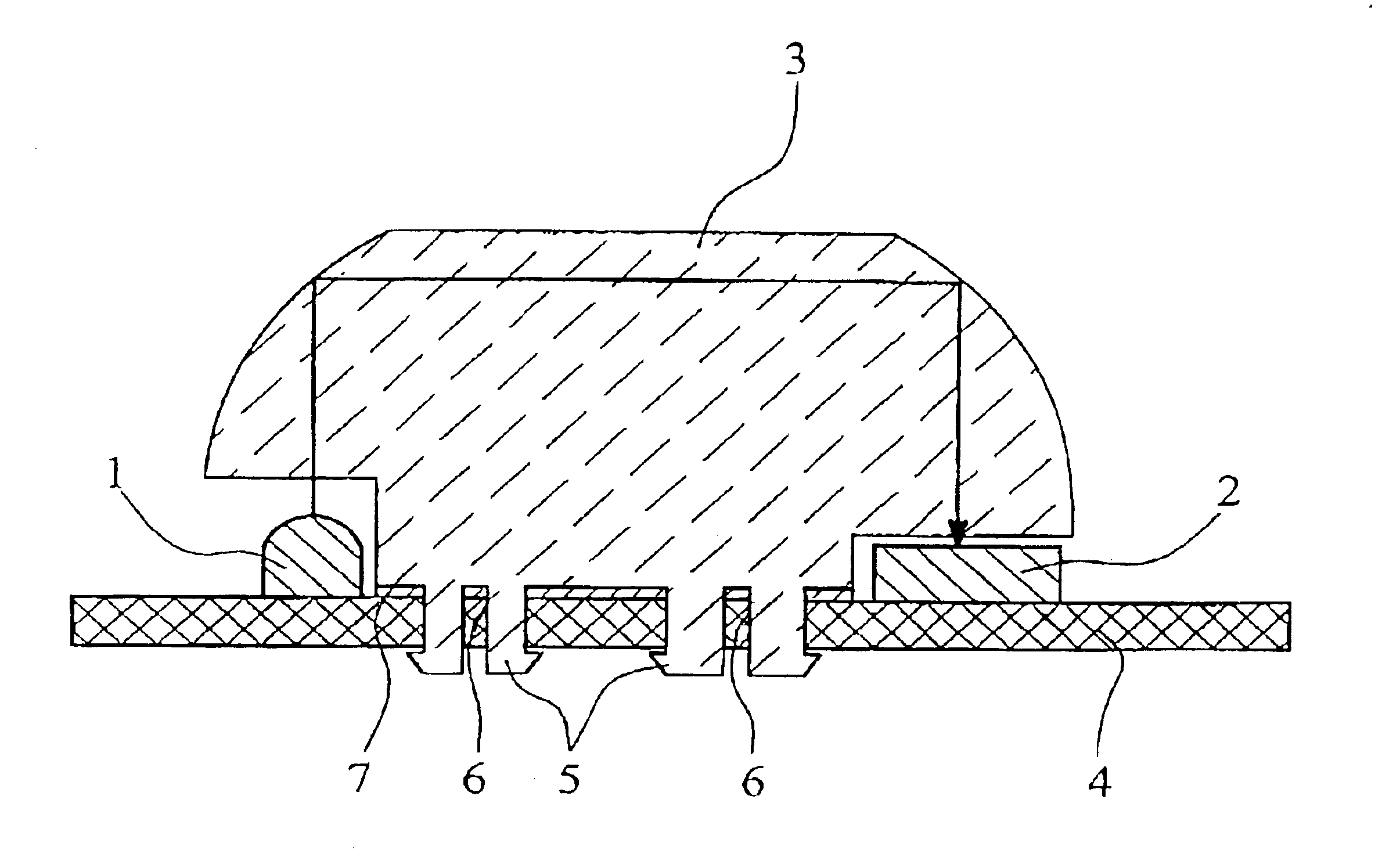Optoelectronic coupler
a technology of optoelectronic couplers and couplers, which is applied in the field of optoelectronic couplers, can solve the problems of affecting the performance of the coupler, the coupler is not easy to meet, and the interference is easy to be affected, and achieves the effects of low price, simple design and easy installation
- Summary
- Abstract
- Description
- Claims
- Application Information
AI Technical Summary
Benefits of technology
Problems solved by technology
Method used
Image
Examples
Embodiment Construction
[0022]The optoelectronic coupler illustrated in the drawing FIGURE, representing a preferred embodiment of the invention, encompasses two photodiodes 1, 2, these being a transmitting diode 1 and a receiving diode 2. Positioned between the transmitting diode 1 and the receiving diode 2 is a light guide 3 that serves to guide the light emitted by the transmitting diode 1 to the receiving diode 2. The light guide 3, being transmissive to the infrared light with which the photodiodes 1, 2 operate, is a synthetic plastic element consisting of polycarbonate, e.g. a PCV 2302 material.
[0023]As is evident from the drawing, the light guide 3 has a simple geometric i.e. physical shape, enabling it to be mounted on a circuit board 4 between the two photodiodes 1, 2 and, given the positioning of the transmitting diode 1 relative to the receiving diode 2, to guide the infrared light emitted by the transmitting diode 1 to the receiving diode 2. To that effect, two mutually opposite flanks of the l...
PUM
 Login to View More
Login to View More Abstract
Description
Claims
Application Information
 Login to View More
Login to View More - R&D
- Intellectual Property
- Life Sciences
- Materials
- Tech Scout
- Unparalleled Data Quality
- Higher Quality Content
- 60% Fewer Hallucinations
Browse by: Latest US Patents, China's latest patents, Technical Efficacy Thesaurus, Application Domain, Technology Topic, Popular Technical Reports.
© 2025 PatSnap. All rights reserved.Legal|Privacy policy|Modern Slavery Act Transparency Statement|Sitemap|About US| Contact US: help@patsnap.com


